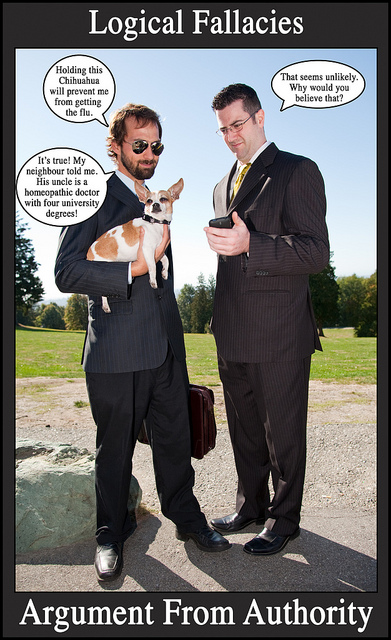
#RED HERRING FALLACY COMMERCIAL FULL#
Brewer's Dictionary of Phrase and Fable (1981) gives the full phrase as "Drawing a red herring across the path", an idiom meaning "to divert attention from the main question by some side issue" here, once again, a "dried, smoked and salted" herring when "drawn across a fox's path destroys the scent and sets the hounds at fault." Another variation of the dog story is given by Robert Hendrickson (1994) who says escaping convicts used the pungent fish to throw off hounds in pursuit. Butler's Life of Napier, published in 1849. A variation of this story is given, without mention of its use in training, in The Macmillan Book of Proverbs, Maxims, and Famous Phrases (1976), with the earliest use cited being from W. The dog eventually learned to follow the original scent rather than the stronger scent. Later, when the dog was being trained to follow the faint odour of a fox or a badger, the trainer would drag a red herring (whose strong scent confuses the animal) perpendicular to the animal's trail to confuse the dog. There are variations of the story, but according to one version, the pungent red herring would be dragged along a trail until a puppy learned to follow the scent. Until 2008, the figurative sense of "red herring" was thought to originate from a supposed technique of training young scent hounds. In this literal sense, as a strongly cured kipper, the term can be dated to the mid-13th century, in the poem The Treatise by Walter of Bibbesworth: "He eteþ no ffyssh But heryng red." This process makes the fish particularly pungent smelling and, with strong enough brine, turns its flesh reddish.

There is no fish species "red herring", rather it is a name given to a particularly strong kipper, made with fish (typically herring) that has been strongly cured in brine or heavily smoked. William Cobbett, February 14, 1807, Cobbett's Political Register, Volume XI When I was a boy, we used, in order to draw oft' the harriers from the trail of a hare that we had set down as our own private property, get to her haunt early in the morning, and drag a red-herring, tied to a string, four or five miles over hedges and ditches, across fields and through coppices, till we got to a point, whence we were pretty sure the hunters would not return to the spot where they had thrown off and, though I would, by no means, be understood, as comparing the editors and proprietors of the London daily press to animals half so sagacious and so faithful as hounds, I cannot help thinking, that, in the case to which we are referring, they must have been misled, at first, by some political deceiver.

Ī red herring is found in the first Sherlock Holmes story, A Study in Scarlet, where the murderer writes at the crime scene the word "Rache" ("revenge" in German), leading the police-and the reader-to mistakenly presume that a German was involved.Ī red herring is often used in legal studies and exam problems to mislead and distract students from reaching a correct conclusion about a legal issue, intended as a device that tests students' comprehension of underlying law and their ability to properly discern material factual circumstances. The character's name is a loose Italian translation of "red herring" ( aringa rosa rosa actually meaning pink, and very close to rossa, red).
#RED HERRING FALLACY COMMERCIAL CODE#
For example, the character of Bishop Aringarosa in Dan Brown's The Da Vinci Code is presented for most of the novel as if he is at the centre of the church's conspiracies, but is later revealed to have been innocently duped by the true antagonist of the story. In fiction and non-fiction a red herring may be intentionally used by the writer to plant a false clue that leads readers or audiences toward a false conclusion. I recommend you support this because we are in a budget crisis, and we do not want our salaries affected." The second sentence, though used to support the first sentence, does not address that topic. For example, "I think we should make the academic requirements stricter for students.

The expression is mainly used to assert that an argument is not relevant to the issue being discussed. According to the Oxford English Dictionary, a red herring may be intentional or unintentional it is not necessarily a conscious intent to mislead. Unlike the straw man, which involves a distortion of the other party's position, the red herring is a seemingly plausible, though ultimately irrelevant, diversionary tactic. As an informal fallacy, the red herring falls into a broad class of relevance fallacies.


 0 kommentar(er)
0 kommentar(er)
